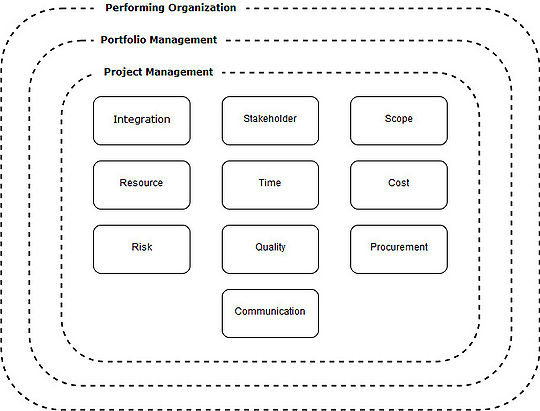Systems Theory in Project Management
Developed by Costanza Sesti
Contents |
Abstract
This article aims to explore how the Systems Theory can be applied to Project Management and how it helps to deal with project complexity. In particular, it starts with a general description of the Systems Theory, from the definition of a system to the development of the system thinking in engineering [1]. It is not clear if engineering systems constitute a new discipline with theorems and frameworks that could be applied to every type of engineering systems. For this reason, the article continues illustrating which are the properties of a system (like the capacity of adaptation of the system in order to always seek for the equilibrium) and it discusses if it is licit to use this theory in the project management field underlying the benefits that it brings. At this point, the different components of a system in the project manager field are presented: objectives, boundaries, attributes, relationships, and environment. A big role is played by the interconnections and the relationships within the different parts of the same system which characterize and defines the system itself. Defining them correctly may have a great impact on the effectiveness and efficiency of the Systems Theory. In the paragraph related to the application, the main tools used to translate the system thinking in graphics are reported in relation to the project lifecycle development. Further readings about the use of the tools themselves are suggested. However, the article focuses on explaining the applications of causal loop diagrams and systems archetypes related to the levels of thinking. It ends with the main limitations that the Systems Theory faces: the fact that it may be not applicable or hard to apply to smaller organizations and that it is prefered by experienced rather than inexperienced project managers.
Big idea
Introduction
Starting from the definition of system:
“A set of things working together as parts of a mechanism or an interconnecting network; a complex whole” [2]
Systems Theory is a general concept developed in the biology field and then extended to many other fields including engineering.
An engineering system is defined as:
“A class of systems characterized by a high degree of technical complexity, social intricacy, and elaborate processes, aimed at fulfilling important functions in society”[1]
Systems Theory, known also as systems thinking, consists of applying the rules and properties which govern systems to other objects that can be thought similar.
Systems Theory is as
"a discipline for seeing wholes rather than parts, for seeing patterns of change rather than static snapshots, and for understanding the subtle interconnectedness that gives (living) systems their unique character" [3].
It has been acknowledged by Ludwig von Bertalanffy’s General Systems Theory [4], and it brought to the creation of Project Management tools as network chart or Gantt chart[5].
The reason why Systems Theory looks at the whole instead of considering singularly each element and going in deep with the analysis of those is that when the system is broken into its parts its properties and dynamics get lost[6].
Due to the fact that Systems Theory is a concept rather than a tool, usually, it is not explicitly included in the Project Management education[5]. A reason could be that when dealing with the System Thinking in the engineering field, it is not known yet if the engineering systems are ruled by their own right, principles, theorems and axioms constituting a new discipline or if they are taking concepts from other fields like management, economics, policy or technology[1]. Moreover, the actual use of systems thinking techniques in projects has not previously been researched[5].
The following section aims to describe the main properties of a system which are fundamental in order to understand the basis and, then, the application of Systems Theory.
System Properties
- Equilibrium-seeking
All systems have an ideal state of equilibrium based on current conditions, object values, environmental influences and relationships. Their characteristic is to always try to self-correct themselves each time they are deviating from their equilibrium even if system' ideal state does not match the desired ideal state. Consequently, systems far from their state of equilibrium have the tendency to be more chaotic and unpredictable that systems close to their ideal state which tend to be more predictable and stabler[7].
- Collateral effects
Strictly related to this, it is worth to mention that changing an element within the system will bring collateral effects influencing other elements within the same. It is thus necessary to understand the interconnections which govern each system in order to minimize the undesired consequences. This shows how the Systems Theory is linked to the complexity of Project Management and Risk Management[6].
- Soft and Hard systems
Engineering systems can be defined either “soft” or “hard” systems. This distinction is mainly due to the type of approach of the system. As Project Management is more people focused (the list of the Best Practices reported in the PMI standards include: personnel management, motivation, team performance, team structure, stakeholder management, negotiation, communications management, and leadership) the approach to the systems is considered soft compared to hard systems which concern with products and technology[8]. Soft systems and hard systems are different also in the methodology they follow. Soft systems methodology (SSM) is “systemic” while hard systems methodology is “systematic”. SSM becomes quite relevant when dealing with changes. Considering that in large projects and mega-projects change is inevitable, the use of systemic mythology helps to learn what changes are feasible and desirable from the problem context[5].
- Open and Closed systems
Another characteristic of systems is that they can be either open or closed. In this article, only open systems are taken into consideration since close systems cannot interact with external factor and result being not adaptable to changes. Open systems, instead, can interact with the external environment and with other systems, and they result in this way being more complex to understand but also adaptable to changes[7].
- System Hierarchy
To conclude, systems are organized by a hierarchy which is related to the vitality, survivability, and purpose of a system. By understanding the hierarchy it is possible to learn internally and externally systems interconnections[8].
Systems Theory in Project Management
Narrowing down the focus within the Project Management a project itself can be thought of as a complex system. This is due to the fact that a project is made by people and it constitutes a network with a precise scope: a purpose. Projects are complex also because everything, from people, businesses and environments, is interconnected internally and externally[7]. Moreover, often systems are themselves part of more complex systems as in this case projects can be part of programs that can, in their turn, be part of portfolios which are supervised by performing organizations. The following figure represents the ten elements which constitute a project according to the PMI[Glossary 1] standard [9] and the more and more complex systems they are part of.
The systems thinking approach has several benefits like not considering projects in a deterministic way, improving cost and schedule realism, anticipating possible challenges, and improving the understanding of stakeholders’ needs throughout the (extended) project life-cycle[5].
It is worth to remark that Systems Theory does not aim to substitute the traditional top-down thinking but rather complement it. Systems thinking, in fact, could not work without understanding before the system in all its parts, but, at the same time, it enables a more flexible approach which allows deviations from the project plan that proves to be very useful when dealing with projects with high degree of complexity. In addition, it encourages communications through boundaries and innovations providing project managers with skills that can help them handling complexities rather than limit their work to track the progress[5]. Thus, systems thinking can help in raising the awareness of wider business objectives and in designing better products or services.
Lastly, Systems Theory encourages to think by alternatives and options, taking into consideration variants of principles, concepts, and detail concepts[10].
Applications
The aim of this section is to illustrate how the Systems Theory can be applied within Project Management.
Elements of a system
First of all, a system is composed of five primary elements:
- Objects: These are the parts, components, variables, subsystems, or elements that make up a system[7].In Project Management the objectives are all inputs, tools and techniques, and outputs as it has been reported in the example in Figure 2 which represent a system performing Quality Control.
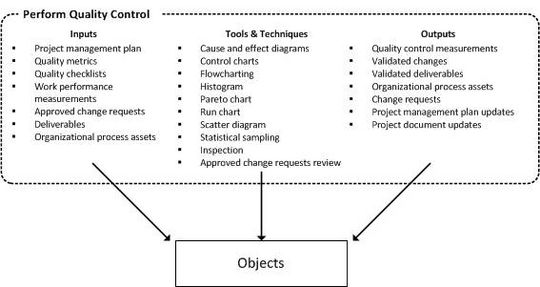
- Attributes: These are the properties and qualities of a system, which may be measurements of effects or behaviours at a point in time[7]. The previous example continues with a list of attributes for the same system.
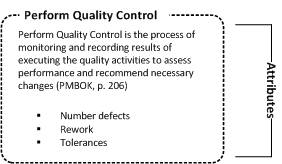
- Relationships: All the objects within a system have relationships with other objects in the system, and in open systems, the system itself will have relationships with other systems[7]. The figure illustrates the relationship between deliverables and validated deliverables in a Quality Control Performance.
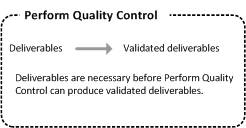
- Boundaries: A system is restricted by a boundary. In an open system, this is a permeable boundary since information, energy, or matter is exchanged with and received from outside, but in a closed system, its boundary can't be penetrated[7]. Following the example types of Boundaries for a Quality Control system could be: Plan Quality, Perform Quality Control and Verify Scope.
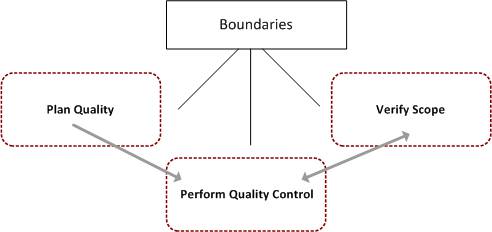
- Environmental Influences: All systems, even closed systems, exist in larger environments. Open systems exert influences on the external environments and are themselves influenced by their environments[7]. Figure 6 shows as Environmental Influences the Performing Organization and the Customer's Organization.
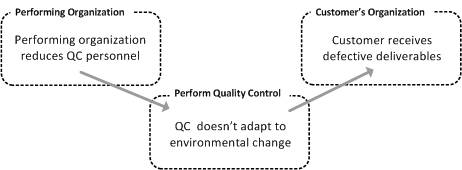
The interactions of all these elements make the project not only complex and dynamic but also unique.
Systems Theory: Tools&Techniques
The application of the Systems Theory can be done mainly in two ways: through stories and diagrams. They aim to illustrate the behaviour and the effects of systems by understanding the five elements previously mentioned. Stories and diagrams represent only conceptual generalizations of the systems which cannot be used in order to understand systems themselves but as a support. The main issue is the simultaneity which rules project actions that is hard to represent in a diagram[7].
In regards to those diagrams, it is possible to divide the project lifecycle into three main phases and associate to each phase different systems thinking tools and techniques. The following picture is the combination of the Association for Project Management (APM)[Glossary 2] and the Project Management Institute (PMI) proposed system lifecycle development.
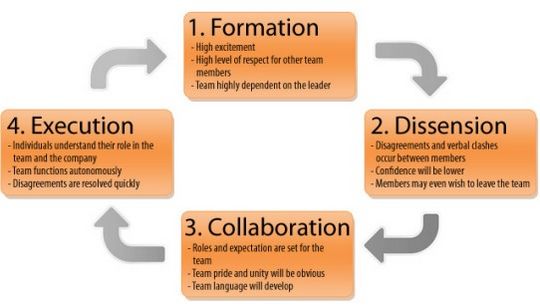
Systems Theory can be applied from the initial phase of project management, “the concept and design phase”, which consists of understanding the problem-solving process and then be extended to other two main phases: "implementation" and "evaluation", through the system life cycle.
Brainstorming can be particularly efficient at the beginning in order to see the whole system and avoiding a top-down approach[5].
Through the following stages, APM identifies mainly other six tools that can be used:
- Fishbone diagram: which distinguishes hard and soft variables that affect the problem of interest[5];
- Rich picture: which enables a problem situation to be defined by multiple stakeholders and an initial mental model to be created[5];
- Actor map: which characterises key organisations and roles that are in, and affected by, the system[5];
- Concept map: which shows the knowledge concepts of a topic, where the main concept is broken down to show its sub-topics and their relationships[5];
- Trend map: which enables to visualise activities and events in order to identify potential contextual factors[5];
- Causal loop diagram (CLD)[Glossary 3]: which represents the relationships between system elements[5].
PMI instead, in addition to CDL and Rich picture tools, identifies in the article Systems thinking approaches to address complex issues in project management as relevant tools when dealing with systems thinking the following[8]:
- System Archetypes: one class of tools that capture ‘common stories’ in systems thinking—dynamic phenomena that occur repeatedly in diverse settings[8];
- Stock and Flow Diagrams: used when the dynamics associated with the loops are also difficult to simulate using computers, they are simple models which include several mathematical equations in order to build simulations[8];
- Root Definition: helps to prepare a concise statement of what a system is expected to achieve in its most fundamental form[8].
As it has been affirmed before for the systems thinking, these tools are used as a supplement to the tools recommended as Best Practices by professional Project Management institutes such as PMI. In case “wicked problems” arise in projects, in fact, standard tools are ineffective because they follow a linear approach useful when dealing with static objectives and well-understood interconnections[8].
What is important in systems thinking is to not look only at the process itself, but to think more widely of their inputs, outputs, relationships, dependencies and influences in relation with the system itself and all the other systems, before coming out with conclusions[7].
In the following sections, the applications of two tools considered fundamental when approaching the Systems Theory are explained.
CLD in Project Management
Systems thinking has a circular perspective on how to look at causes-and-effects. In order to study these relationships, CLD can be applied. By using arrows and labels, this tool shows causes-and-effects, relationships and time delays within the elements of the system[7].
A CDL is composed of variables and loop.
- Variables: These are the specific causes, effects and influences within the system of what is occurring and what is desired. It's often difficult to uncover all variables, but there is the necessity to ensure that effects, influences, or behaviours are not overlooked[7].
- Loops: Loops show the relationships in the system by linking the variables together. The causation or influence link between the variables is either:
- -Same: an increase in one results in an increase in the other, or a decrease in one results in a decrease in the other. This can be shown with an "S" on the loop or with a plus sign.
- -Opposite: an increase in one results in a decrease in the other, or a decrease in one results in an increase in the other. This can be shown as an "O" on the loop or with a minus sign[7].
CLD aims to understand the fundamental dynamics of the system and to develop policy levers to control variation in the system by looking for leverage points[8].
When analysing causal loops it is needed to understand the concept of Behaviour Over Time (BOT)[Glossary 4]. BOT graphs, in fact, help to understand the actual project behaviour and through this to predict its future behaviour[8]. By reinforcing and balancing processes over time they explore systems behaviours[5]. These type of graphs build, in this way, a learning structure that is useful either for understanding the development of the project itself and for future projects.
Levels of thinking and System Archetypes
By studying causal loops, it is possible to identify recurring patterns called system archetypes which help in detecting leverage points and root causes which lie behind a complex problem. This relationship is shown in the following figure in which the four levels of thinking, from the general mental model to the specific events, are reported[8].
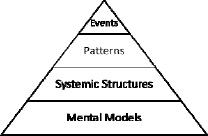 Figure 8: Levels of thinking in Project Management, picture by https://www.pmi.org/learning/library/systems-thinking-soft-methodology-issues-6912
Figure 8: Levels of thinking in Project Management, picture by https://www.pmi.org/learning/library/systems-thinking-soft-methodology-issues-6912
“System archetypes are one class of tools that capture ‘common stories’ in systems thinking—dynamic phenomena that occur repeatedly in diverse settings[8].”
There are several types of system archetypes but in projects the most common are:
- Influencing Change:
- -Tragedy of the Commons: occurs when only a finite amount of resources are available that are allocated on a first-come, first-serve basis. As long as the resources are adequate, all parties are successful, but as the resource get scarcer, the allocation is often based on who figures out how to work the system best[11].
- Problem Solving:
- -Fixes that Fail: results in a problem that keeps resurfacing after it appeared to be solved. This is normally due to unintended consequences of the solution that undermining the results[11].;
- -Shifting the Burden: results in fixes that only exasperate the core problem over time. It's caused by focusing on a symptomatic, short-term solution rather than addressing the root cause[11].
The list has been done by combining the system archetypes provided by the articles of Project Smarts and of the already mentioned PMI. System archetypes are particularly useful in problem-solving. Being a classification of systems behaviour, they provide a relatively easy tool to spot and forecast behaviour and develop a response plan for instituting changes to meet objectives.
Limitations
The limits of Systems Theory
Through the article, it has emerged that the main limit related to the System Theory concerns with its need to be used always as a complement to other theories like the linear theory or the top-down approach. Thus, it is not self-sufficient for understanding and dealing with projects complexity.
Secondly, in real cases, it has been demonstrated that systems thinking is more prevalent in large projects/organizations than in small projects/organizations, revealing that its application is relatively limited. Moreover, the same studies have revealed that systems thinking is applied more by experienced project managers than by inexperienced project managers. This is due to the fact that inexperienced project managers find hard, for the absence of standardized guidelines, and useless to apply this theory[5].
Other limitations concern with its unpractical nature and the importance that interconnections within the systems elements assume. Defining interconnection in the wrong way might lead to delays in decision making and it can result totally counterproductive.
Last but not least Systems Theory, as it has been affirmed before in the article, can not be applied to closed systems.
The limits of the article
The main limitation of the article, instead, concerns with the unavailable and not always consistent information about Systems Theory. The article is the result of different researches combined together in order to highlight the common points and give a logical and coherent understanding of the concept. Moreover, it has been not feasible and it would have been out of purpose to explore all the tools and techniques that can be applied in Systems Theory, for this reason, further readings about the tools and techniques mentioned in this article are suggested.
Glossary
- ↑ Project Management Institute (PMI):is a global nonprofit professional organization for project management.
- ↑ Association for Project Management (APM): Promotes the professional disciplines of project management and programme management in the UK.
- ↑ Causal Loop Diagram (CLD): Diagram which represents the relationships between system elements.
- ↑ Behaviour Over Time (BOT): Is a simple tool that can help people focus on patterns of change over time rather than on isolated events.
References
- ↑ 1.0 1.1 1.2 Engineering Systems-Meeting Human Needs in a Complex Technological World, 2011, Olivier L. de Weck, Daniel Roos, and Christopher L. Magee, page 180
- ↑ https://en.oxforddictionaries.com/definition/system
- ↑ The Fifth Discipline: Art and Practice of the Learning Organization, 1990, Senge, New York, Doubleday
- ↑ General System Theory: Foundations, Development, Applications,1968, VON BERTALANFFY, New York, George Braziller
- ↑ 5.00 5.01 5.02 5.03 5.04 5.05 5.06 5.07 5.08 5.09 5.10 5.11 5.12 5.13 5.14 Systems thinking: How is it used in project management?, April 2008, APM, pages 6-,7,8,10,11,12,14,29
- ↑ 6.0 6.1 Can we apply systems theory to Project Management, Girish Deshpande, October 2011, https://www.mindtree.com/blog/can-we-apply-systems-theory-project-management
- ↑ 7.00 7.01 7.02 7.03 7.04 7.05 7.06 7.07 7.08 7.09 7.10 7.11 7.12 A Project Manager's guide to System Thinking: part 1,J. Alex Sherrer, July 2010,
- ↑ 8.00 8.01 8.02 8.03 8.04 8.05 8.06 8.07 8.08 8.09 8.10 Sankaran, S., Haslett, T., & Sheffield, J. (2010). Systems thinking approaches to address complex issues in project management. Paper presented at PMI® Global Congress 2010—Asia Pacific, Melbourne, Victoria, Australia. Newtown Square, PA: Project Management Institute
- ↑ Dansk Standard ISO 21500,2012
- ↑ DTU Management Engineering, Engineering Systems Group, System-Oriented Problem Solving, Josef Oehmen, Spring 2019
- ↑ 11.0 11.1 11.2 A Project Manager's guide to System Thinking: part 2,J. Alex Sherrer, July 2010,
Annotated Bibliography
Engineering Systems-Meeting Human Needs in a Complex Technological World, 2011, Olivier L. de Weck, Daniel Roos, and Christopher L. Magee: The book provides insight about engineering systems and Systems Theory in engineering.
ISO 21500, Dansk Standard, 2012: The ISO guidelines about Project Management provide the basis for developing concepts as System and Systems Theory in relation to projects.
